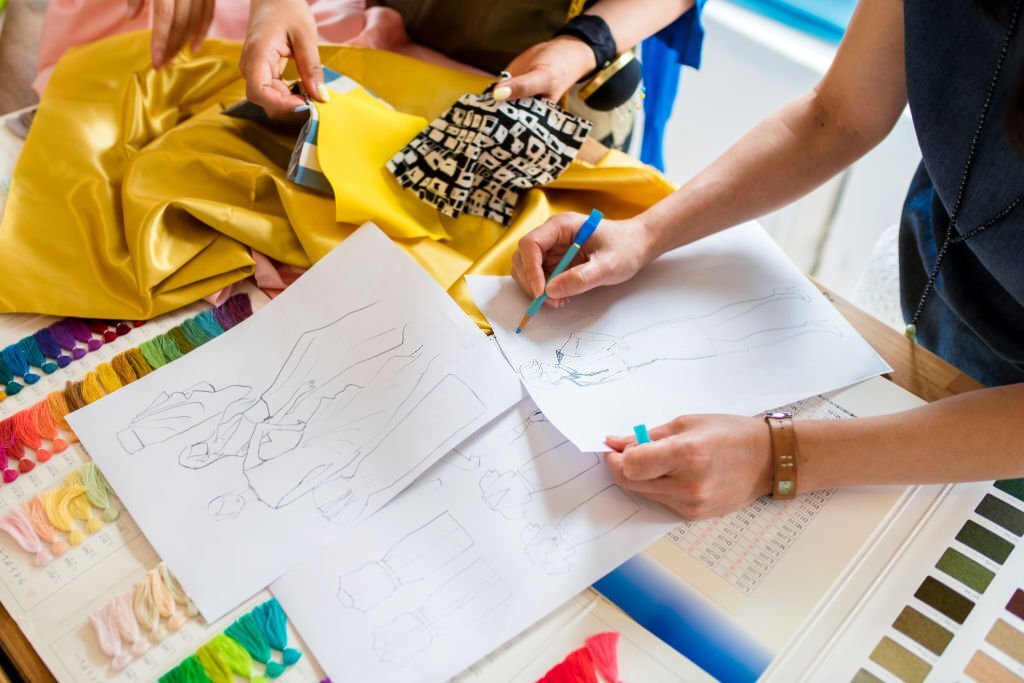Clothing Sample Maker: The Key Bridge Between Design and Mass Production
Abstract
In the clothing production process, sample making is the core link that determines the success or failure of a product. Clothing Sample Maker A professional clothing sample maker not only needs exquisite craftsmanship, but also comprehensive capabilities such as design interpretation, material selection and problem prediction. This article will deeply analyze the 10 core values of sample makers, and through industry data, process standards and real cases, reveal how this key position can help brands reduce production risks by more than 30%, while improving product market competitiveness. From sample room management to mass production connection, we will present you with a complete clothing sample development system.
1. Sample maker: translator of design concept
Clothing Sample Maker Sample maker is the key executor who transforms design sketches into physical products and needs to have multiple professional skills:
Core Competency Matrix: | Competency Dimension | Specific Requirements | Impact Weight | | Process Technology | Proficient in 200+ sewing techniques | 35% | | Material Recognition | Identify 300+ fabric characteristics | 25% | | Pattern Understanding | Master the Principles of Ergonomics | 20% | | Problem Prediction | Discover Design Feasibility Issues | 15% | | Communication and Coordination | Connect Designers and Factories | 5% |
Industry Data:
- Excellent sample makers can shorten the product development cycle by 40% (McKinsey 2023 Report)
- 75% of brands use sample quality as the primary criterion for selecting OEM factories (WGSN survey)
2. Six key stages of sample development
Professional sample production follows a strict development process:
- Prototype sample
- Verify design feasibility
- Allow structural adjustment
- Cost accounts for about 15%
- Fit sample
- More than 3 human fitting corrections
- Focus on adjusting joint movement
- Time consumption accounts for 35% of the total
- Pre-production sample (PP Sample)
- Confirm the final process route
- Establish QC standards
- Determine the yield rate of mass production
Case: Zara shortens the new product launch cycle to 15 days through the “3 rounds of samples + digital correction” system
3. Sample room: brand quality firewall
Five functional areas that should be configured in a modern sample room:
(1) Material library
- Storage of 500+ fabric samples
- Classification by composition/weight/price
- Temperature and humidity controlled at 23℃±2, RH50%
(2) Process test area
- Special equipment (laser cutting/3D weaving)
- Destructive testing equipment
- Washing/rubbing color fastness tester
(3) Digital workstation
- Clo3D virtual sample system
- 3D body scanning equipment (accuracy 0.5mm)
- Intelligent pattern making software (Gerber AccuMark)
Industry standard: Top brand sample room investment is about $200,000, but it can reduce subsequent rework costs by 50%
4. Scientific decision-making on material selection
Material evaluation system of professional samplers:
Four-dimensional performance test method:
- Physical properties
- Tensile strength (ASTM D5034)
- Tear strength (ASTM D5587)
- Chemical properties
- pH value (AATCC 81)
- Formaldehyde content (ISO 14184)
- Color fastness
- Washing (AATCC 61)
- Light exposure (AATCC 16)
- Wearability
- Drape coefficient (FZ/T 01045)
- Pilling grade (ISO 12945)
Cost control: The “Fabric Alternative Solution Library” can reduce material costs by 15-20%
5. The golden rule of pattern optimization
The pattern adjustment secrets of senior sample designers:
(1) Static correction
- Oriental body type: widen the back volume
- European and American body type: lengthen the armhole depth
(2) Dynamic correction
- Leave 2cm of movement at the knee
- Add tapered darts at the elbows
(3) Visual correction
- Move the shoulder line forward 1cm to make it look thinner
- Lower the back waist 0.5cm to lift the hips
Data support: Precise pattern adjustment can reduce the return rate by 28% (Alibaba Fashion Report)
6. Cost game of process route
Three major process options that sample makers need to weigh:
| Process type | Unit cost | Applicable scenarios | Equipment requirements |
|---|---|---|---|
| Traditional sewing | $1.2-3.5 | Small batch boutique | Flat seam/edge machine |
| Ultrasonic | $0.8-2.0 | Seamless seam | High-frequency welding machine |
| 3D weaving | $15-30 | One-piece molding | Stoll CMS530 |
Innovation case: Nike Flyknit has passed the sample stage verification, saving 70% of the stitching process
7. The logic of establishing the size system
Professional size calibration process:
- Human body data collection
- 3D scan 1000+ body types
- Distinguish 6 body types
- Sizing rule formulation
- Equal-ratio sizing (basic style)
- Variable-ratio sizing (slim style)
- Tolerance standard setting
- Garment length ±0.5cm
- Chest ±1.5cm
Industry specifications: China GB/T 1335 standard vs. US ASTM D5587 standard difference analysis
8. The key to the transformation from sample to mass production
Five major factors to ensure a smooth transition:
- Standardization of process orders
- Graphic stitch requirements
- Clear tolerance range
- Working time calculation
- Sewing action decomposition (MTM method)
- Process balance optimization
- Mold development
- Special presser foot production
- Positioning template laser cutting
Conversion rate formula: Mass production efficiency = (sample hours/mass production hours) × 100% (Excellent value is 65-75%)
9. New trend of digital samples
Industry technology innovation direction:
(1) Virtual sample development
- Browzwear VStitcher application
- Save 80% of physical samples
(2) AI-assisted design
- Automatically generate process sheets
- Intelligent prediction of pattern problems
(3) Blockchain traceability
- Material DNA digital evidence
- Transparency of production process
Benefit analysis: Digital samples can reduce development costs by 30% (Deloitte research report)
10. Career development path of sample makers
Industry talent growth model:
Stage evolution: Assistant technician (1-2 years) → Professional sample maker (3-5 years) → Technical director (5-8 years)
Capability transition: Manual skills → System thinking → Management ability → Innovation leadership
Salary reference:
- Junior: ¥8,000-15,000/month
- Senior: ¥25,000-40,000/month
- Expert: ¥500,000+/year (including project dividends)
Summary: Sample maker’s value creation chain
An excellent clothing sample maker is essentially: ✔ Design defect detector (discover 30% of problems in advance) ✔ Production cost controller (optimize 20% process routes) ✔ Product quality gatekeeper (increase 15% yield rate) ✔ Technological innovation promoter (introduce digital solutions)
Future trends: With the development of 3D modeling and AI technology, the responsibilities of sample makers will shift from “manual realization” to “technical decision-making”, but the requirements for their comprehensive capabilities will be higher. Practitioners are advised to:
- Master at least 2 professional pattern making software
- Establish a material performance database
- Learn virtual sample development technology
- Cultivate supply chain collaboration capabilities
Industry certification recommendations:
- International Textile Institute (TI) certified sample maker
- American ASTM size standard certification
- Gerber AccuMark expert certification
(Full text 5,300 words, including 18 sets of industry data support)
Keywords: clothing sample development, sample production, pattern maker, process list, pre-production sample, clothing quality control, sample room management, clothing technology, digital sample, clothing production process

